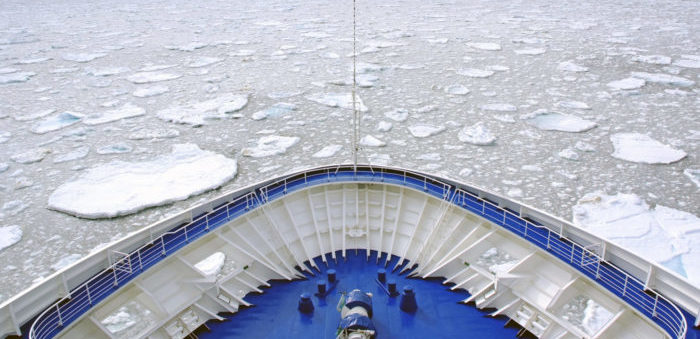The Arctic Council’s Emergency Prevention, Preparedness and Response (EPPR) Working Group issued a Guideline for Arctic Marine Risk Assessment, after identifying an existing need for a common approach to marine risk assessments in the Arctic region.
The guideline provides best practice methods and data sources for conducting regional and area-wide risk assessments concerned with ship traffic and operations in Arctic and focuses on risk assessments for ship traffic based on the ISO 31000 Structure.
Specifically, the Guideline aims to:
- Engage Arctic stakeholders to agree on best practice methodology and data sources, and make these readily available.
- Better understand, communicate and incorporate specific arctic risk influencing factors (ARIFs) into the risk assessment process.
The Guideline uses the six steps of risk management process with some customization to fit the objective of capturing the arctic risk influencing factors:
- Scope, context and criteria
- Risk identification
- Risk analysis
- Risk evaluation
- Risk treatment
- Report
The Risk Assessment initiative is a follow up to the Arctic Council Framework Plan for Oil Pollution Prevention (FPOPP, 2015).
Based on a scoping workshop in 2017, Norway developed a project proposal that was approved in June 2018.
In 2018, the project performed a wide screening of existing methods, tools and data currently used in marine risk assessments in general, not only in the Arctic Region.
The screening included outreach to international subject matter experts and an open webinar to summarize and discuss the findings.
The screening concluded that current methodologies, tools and data cover a variety of needs and purposes, but that specific Arctic risk influencing factors generally are sparsely addressed.
As such, based on the screening of existing methods, tools and data, the project analyzed how Arctic conditions may influence marine shipping risk, and related environmental risk.
A common structure was developed based on the IMO Polar Code Risk Matrix. Based on the feedback from the experts and stakeholders, it was indicated that a guideline focusing on Arctic conditions and risk drivers would be useful and promote a more common approach to marine risk assessments in the arctic region.
The guideline focuses on the Arctic region but may also be relevant in any area where Arctic conditions may occur.































































